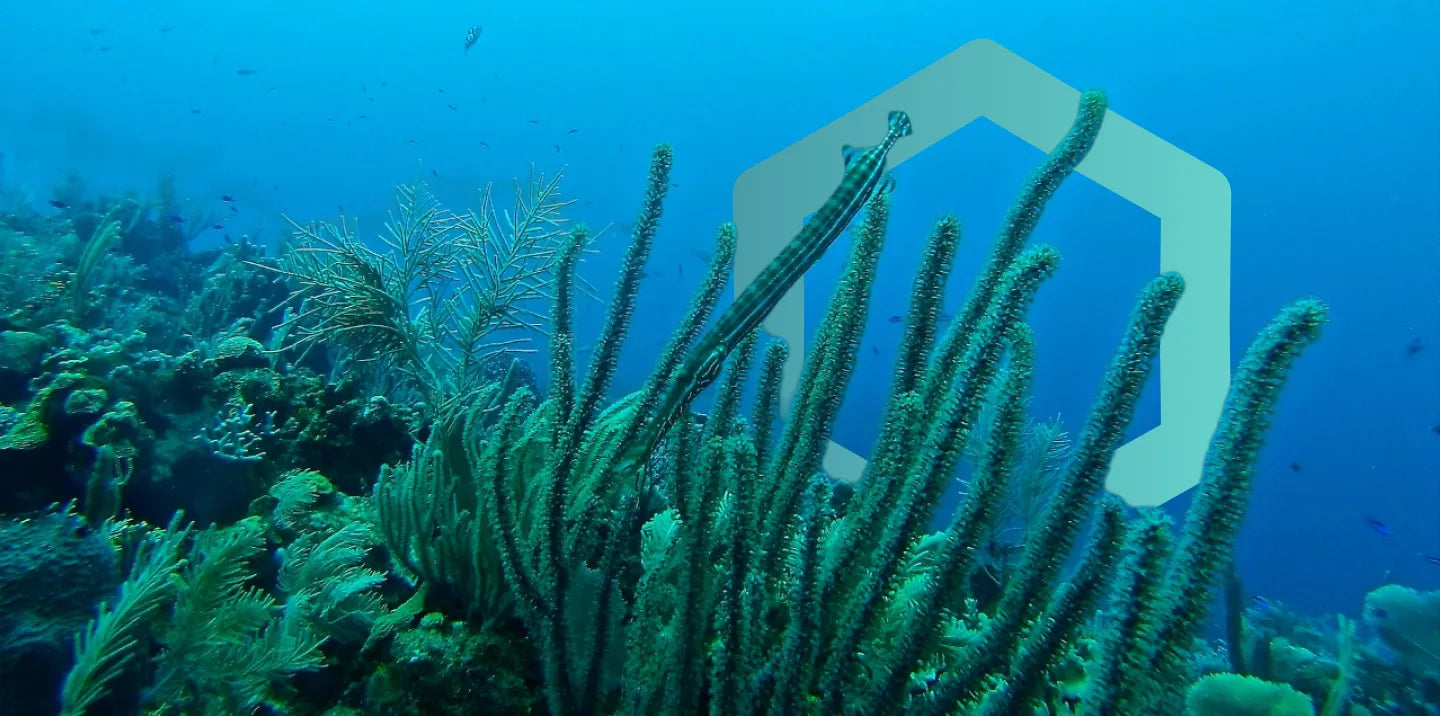Tests
Our full catalogue of multi-species ('metabarcoding') and single-species ('qPCR') tests ('assays')
Tests are grouped by habitat: freshwater, marine water, marine sediment, soil, terrestrial.
Please note, the following products are not currently available from this store: freshwater and marine water bacteria; and our Butternut (Juglans cinerea) service. If you are looking to work with these products, please get in touch.
Freshwater and marine water tests
Vertebrates
Detects fish, amphibians and mammals, generally to species level. Some closely related fish species, such as perch and zander cannot be separated.
Terrestrial mammal eDNA can often end up in nearby water courses, so this test can have the added benefit of delivering detections for some terrestrial vertebrates.
Results are often comprised of a high percentage of fish species (especially ray-finned fish, Actinopterygii) and can include marine mammals, and high (family) level identification for some bird species.
Birds and reptiles can be detected, but this test should not be relied upon as a comprehensive test for these groups.
Fish
Optimised for ray-finned fish (Actinopterygii) such as tuna, seahorses, gobies, cichlids, flatfish, wrasse, perch, anglerfish and pufferfish.
This test does not perform as well for detecting sharks and rays.
In some cases, this test does not provide species level data, e.g. river lamprey and brook lamprey; ide and dace.
Mammals
Detects aquatic and semi-aquatic mammals, and many terrestrial mammals who have visited the water or are nearby – as terrestrial mammal eDNA can often end up in nearby water courses, via runoff.
Detection of terrestrial species can be sporadic as they are less likely to contact water and deposit eDNA. Detection of terrestrial species is dependent on the species either directly interacting with water and/or their eDNA being transported from other waterbodies/via runoff.
Chinese mitten crab (Eriocheir sinensis)
Rainbow trout (Onchorynchus mykiss)
Freshwater tests
Vertebrates
Detects fish, amphibians and mammals, generally to species level. Some closely related fish species, such as perch and zander cannot be separated.
Terrestrial mammal eDNA can often end up in nearby water courses, so this test can have the added benefit of delivering detections for some terrestrial vertebrates.
Results are often comprised of a high percentage of fish species (especially ray-finned fish, Actinopterygii) and can include marine mammals, and high (family) level identification for some bird species.
Birds and reptiles can be detected, but this test should not be relied upon as a comprehensive test for these groups.
Fish
Optimised for ray-finned fish (Actinopterygii) such as tuna, seahorses, gobies, cichlids, flatfish, wrasse, perch, anglerfish and pufferfish.
This test does not perform as well for detecting sharks and rays.
In some cases, this test does not provide species level data, e.g. river lamprey and brook lamprey; ide and dace.
Mammals
Detects aquatic and semi-aquatic mammals, and many terrestrial mammals who have visited the water or are nearby – as terrestrial mammal eDNA can often end up in nearby water courses, via runoff.
Detection of terrestrial species can be sporadic as they are less likely to contact water and deposit eDNA. Detection of terrestrial species is dependent on the species either directly interacting with water and/or their eDNA being transported from other waterbodies/via runoff.
Insects
Detects mayflies, stoneflies, caddisflies, beetles, mussels and other invertebrates and insects. Particularly useful for detecting chironomid flies (non-biting midges) which are used in many parts of the world to monitor freshwater health.
Identifies many taxa to species level that are otherwise difficult to disambiguate (e.g. chironomids).
Detects many species that are important indicators of water quality.
Designed for arthropods, this test carries a bias towards soft-bodied taxa (e.g. Diptera spp.) over hard-bodied taxa (e.g. Coleoptera spp.).
Unionid mussels
Used to identify mussels in the family Unionidae, which includes the endangered freshwater pearl mussel.
Designed for use in the UK. Can be used outside of the UK, but we have less information on what it can detect.
Bivalves (excl. Unionid mussels)
Used to identify mussels in the family Veneridae, and can detect presence of zebra mussels, quagga mussels, and Asian clams.
Designed for use in the UK. Can be used outside of the UK, but we have less information on what it can detect.
Invertebrates (from tissue samples)
Groups detected include arthropods, invertebrates, mayflies, stoneflies, caddisflies, beetles, chironomid flies (non-biting midges) and others.
Species detected are important indicators of water quality.
Detects freshwater invertebrate species collected by multiple sampling methods, e.g. kick-net sampling.
Tissue must be larger than 0.3mm (300um).
Arctic char (Salvelinus alpinus)
Blanding's turtle (Emydoidea blandingii)
Brook trout (Salvelinus fontinalis)
Brown trout (Salmo trutta)
Burbot (Lota lota)
Chinese mitten crab (Eriocheir sinensis)
Chytrid fungus (Batrachochytrium dendrobatidis)
Chytrid fungus (Batrachochytrium salamandrivorans)
Crayfish plague (Aphanomyces astaci)
Dreissenid mussels (genus level)
European eel (Anguilla anguilla)
Great crested newt (Triturus cristatus) (not for UK licensing)
Lake sturgeon (Acipenser fulvescens)
Rainbow trout (Onchorynchus mykiss)
Redside dace (Clinostomus elongatus)
Round whitefish (Prosopium cylindraceaum)
Signal crayfish (Pacifastacus leniusculus)
Silver shiner (Notropis photogenis)
White-clawed crayfish (Austropotamobius pallipes)
Zebra mussel (Dreissena polymorpha)
Marine water tests
Vertebrates
Detects fish, amphibians and mammals, generally to species level. Some closely related fish species, such as perch and zander cannot be separated.
Terrestrial mammal eDNA can often end up in nearby water courses, so this test can have the added benefit of delivering detections for some terrestrial vertebrates.
Results are often comprised of a high percentage of fish species (especially ray-finned fish, Actinopterygii) and can include marine mammals, and high (family) level identification for some bird species.
Birds and reptiles can be detected, but this test should not be relied upon as a comprehensive test for these groups.
Fish
Optimised for ray-finned fish (Actinopterygii) such as tuna, seahorses, gobies, cichlids, flatfish, wrasse, perch, anglerfish and pufferfish.
This test does not perform as well for detecting sharks and rays.
In some cases, this test does not provide species level data, e.g. river lamprey and brook lamprey; ide and dace.
Mammals
Detects aquatic and semi-aquatic mammals, and many terrestrial mammals who have visited the water or are nearby – as terrestrial mammal eDNA can often end up in nearby water courses, via runoff.
Detection of terrestrial species can be sporadic as they are less likely to contact water and deposit eDNA. Detection of terrestrial species is dependent on the species either directly interacting with water and/or their eDNA being transported from other waterbodies/via runoff.
Invertebrates
Groups typically detected include crustaceans, tunicates, cnidarians (including jellyfish), annelids, molluscs, echinoderms, and sponges.
May also detect some vertebrate species.
When running this test on a tissue sample, please note: in order for it to be processed, the tissue must be larger than 0.3mm (300um).
Eukaryotes
Detects algae, macroalgae species (chlorophyta, phaeophyceae, rhodophyta), phytoplankton, zooplankton, protists, ciliates, dinoflagellates, diatoms, annelids, molluscs, crustaceans, tunicates, invertebrates and some cnidarians (including jellyfish) and sponges.
Due to the broad nature of this test, detections will generally be assigned to family or genus level. Test excludes bacteria and archaea. Can sometimes detect vertebrates and fungi.
When running this test on a tissue sample, please note: in order for it to be processed, the tissue must be larger than 0.3mm (300um).
Bacteria (from tissue samples)
Assess the community composition of the microbiome of your sample. Detects 99% of the bacteria in your sample. Generally identifies to the taxonomic level of 'family' or higher.
Can be purchased only in addition to either the eukaryotes from tissue samples or invertebrates from tissue samples tests. (We process the bacteria attached to other organisms in the sample.)
Eukaryotes (from tissue samples)
Detects algae, macroalgae species (chlorophyta, phaeophyceae, rhodophyta), phytoplankton, zooplankton, protists, ciliates, dinoflagellates, diatoms, annelids, molluscs, crustaceans, tunicates, invertebrates and some cnidarians (including jellyfish) and sponges.
Due to the broad nature of this test, detections will generally be assigned to family or genus level. Test excludes bacteria and archaea. Can sometimes detect vertebrates and fungi.
When running this test on a tissue sample, please note: in order for it to be processed, the tissue must be larger than 0.3mm (300um).
Invertebrates (from tissue samples)
Groups typically detected include crustaceans, tunicates, cnidarians (including jellyfish), annelids, molluscs, echinoderms, and sponges.
May also detect some vertebrate species.
When running this test on a tissue sample, please note: in order for it to be processed, the tissue must be larger than 0.3mm (300um).
Atlantic herring (Clupea harengus)
Chinese mitten crab (Eriocheir sinensis)
Rainbow trout (Onchorynchus mykiss)
Marine sediment tests
Bacteria
Eukaryotes
Detects algae, macroalgae species (chlorophyta, phaeophyceae, rhodophyta), phytoplankton, zooplankton, protists, ciliates, dinoflagellates, diatoms, annelids, molluscs, crustaceans, tunicates, invertebrates and some cnidarians (including jellyfish) and sponges.
Due to the broad nature of this test, detections will generally be assigned to family or genus level. Test excludes bacteria and archaea. Can sometimes detect vertebrates and fungi.
When running this test on a tissue sample, please note: in order for it to be processed, the tissue must be larger than 0.3mm (300um).
Invertebrates
Groups typically detected include crustaceans, tunicates, cnidarians (including jellyfish), annelids, molluscs, echinoderms, and sponges.
May also detect some vertebrate species.
Soil tests
Bacteria
Fungi
Detects indicator groups such as waxcaps*, 'CHEGD**' fungi, as well as the wider assemblages of ectomycorrhizal fungi, yeasts, and mushrooms. Generally identifies to family or genus level. Does not perform well for detecting arbuscular or orchid mycorrhizal fungi.
*Nearly 90 per cent of all waxcap species are on one or more European national Red Lists for threatened fungi.
**CHEGD stands for: Clavarioids (spindles, club and coral fungi); Hygrocybe genus (waxcaps); Entoloma (pinkgills); Geoglossum and relatives (earthtongues); and Dermoloma and relatives (crazed caps).
Invertebrates
Detects communities such as nematodes, platyhelminths, annelid worms and some arthropods.
Generally identifies to family or genus level.
Terrestrial tests
Invertebrates (from tissue samples)
Detects invertebrates commonly collected in traps such as: pitfall, malaise, light, pan, Winkler etc.
In order to be analysed, tissue must be larger than 0.3mm (300um).

